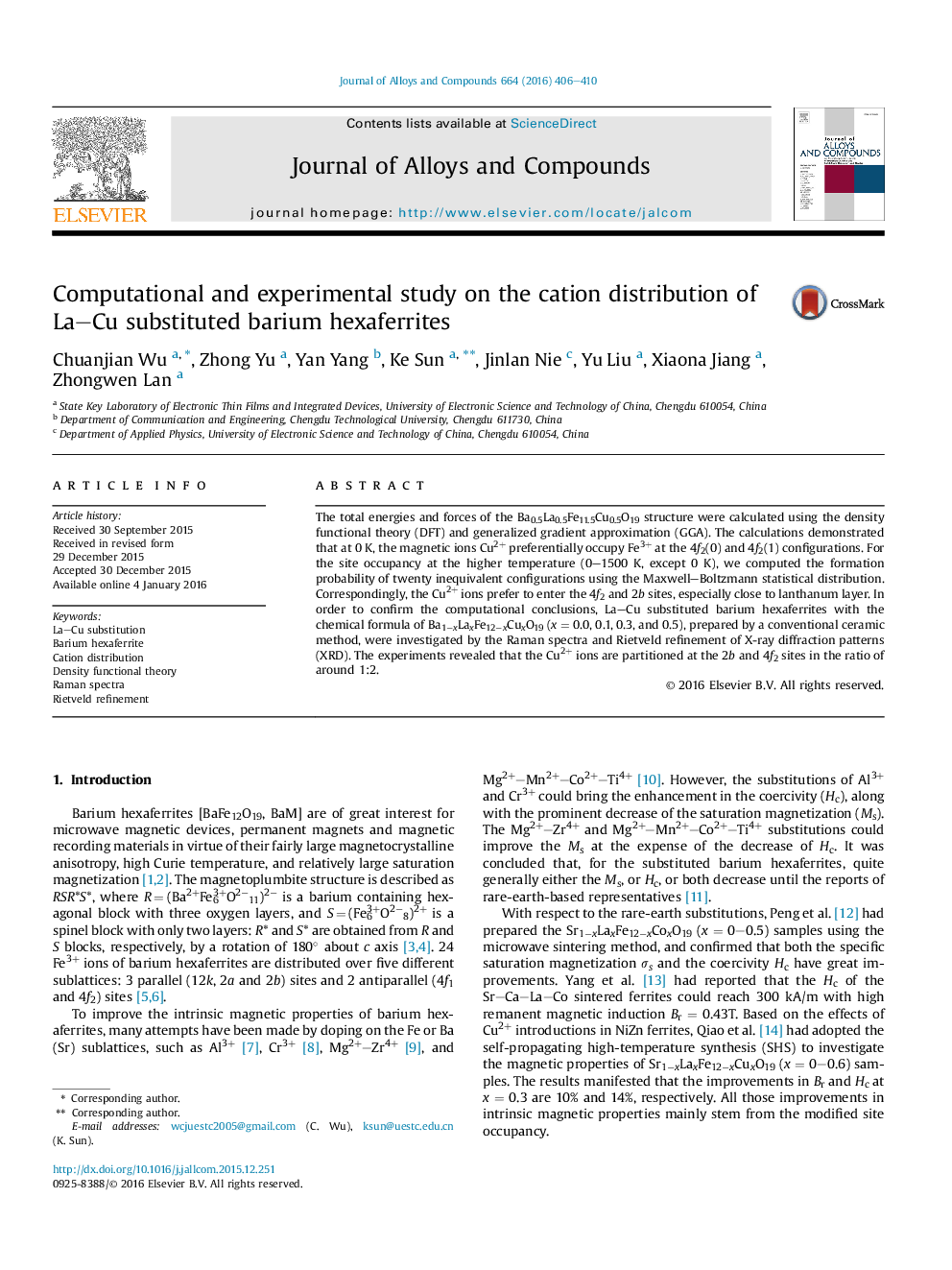| Article ID | Journal | Published Year | Pages | File Type |
|---|---|---|---|---|
| 1607157 | Journal of Alloys and Compounds | 2016 | 5 Pages |
•Twenty inequivalent configurations of Cu occupying Fe were calculated by DFT.•Formation probability of Cu was computed by Maxwell–Boltzmann statistical distribution.•Ba1−xLaxFe12−xCuxO19 samples were prepared by a conventional ceramic method.•The Cu2+ preferentially replace Fe3+ at the 4f2(0) and 4f2(1) configurations.•The ratio of Cu occupying Fe at the 2b and 4f2 sites is approximately 1:2.
The total energies and forces of the Ba0.5La0.5Fe11.5Cu0.5O19 structure were calculated using the density functional theory (DFT) and generalized gradient approximation (GGA). The calculations demonstrated that at 0 K, the magnetic ions Cu2+ preferentially occupy Fe3+ at the 4f2(0) and 4f2(1) configurations. For the site occupancy at the higher temperature (0–1500 K, except 0 K), we computed the formation probability of twenty inequivalent configurations using the Maxwell–Boltzmann statistical distribution. Correspondingly, the Cu2+ ions prefer to enter the 4f2 and 2b sites, especially close to lanthanum layer. In order to confirm the computational conclusions, La–Cu substituted barium hexaferrites with the chemical formula of Ba1−xLaxFe12−xCuxO19 (x = 0.0, 0.1, 0.3, and 0.5), prepared by a conventional ceramic method, were investigated by the Raman spectra and Rietveld refinement of X-ray diffraction patterns (XRD). The experiments revealed that the Cu2+ ions are partitioned at the 2b and 4f2 sites in the ratio of around 1:2.
Graphical abstractFigure optionsDownload full-size imageDownload as PowerPoint slide
